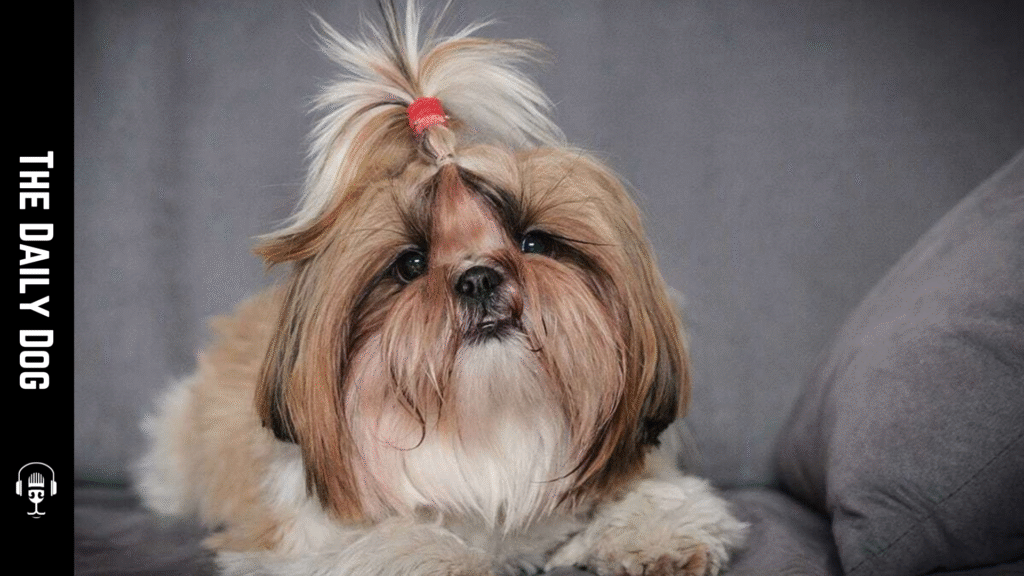The Chinese Imperial Dog, a striking and storied breed, embodies a unique fusion of ancient lineage and contemporary companionship. Known for its refined appearance, dignified demeanor, and steadfast loyalty, this breed has captivated dog lovers for centuries. In homes around the world today, the Chinese Imperial Dog offers more than just beauty; it brings a balanced temperament, a gentle presence, and a rich cultural narrative that makes every interaction feel meaningful. For prospective owners and seasoned dog enthusiasts alike, understanding the breed’s origins, care needs, and personality can illuminate why this canine holds a special place in the pantheon of great companion dogs.
Origin and historical significance
The Chinese Imperial Dog’s heritage is steeped in the dynastic eras of China, where noble families prized small, elegant canines that could offer companionship, alertness, and a sense of ceremonial grace. While exact lineages can vary, the breed is commonly associated with ancient palaces and aristocratic circles, where its poised stance and luxurious coat were celebrated as symbols of refinement. Over centuries, the breed evolved through selective breeding to emphasize characteristics such as a compact frame, expressive eyes, and a dignified, almost regal bearing. Today’s Chinese Imperial Dog remains a living connection to that illustrious past, carrying forward a tradition of grace, loyalty, and quiet confidence.
Appearance and temperament
The breed is renowned for its distinct silhouette: a small to medium-sized dog with a well-proportioned body, a shimmering coat, and an unmistakable air of elegance. Its facial expression often conveys intelligence and empathy, inviting trust and companionship from family members and visitors alike. Coat texture tends to be smooth or slightly wavy, with color patterns that may include rich noir tones or lighter hues depending on the lineage. Beyond aesthetics, the Chinese Imperial Dog is celebrated for a temperament that blends alertness with affectionate gentleness. Many individuals exhibit a keen sense of perception, enabling them to read room dynamics and respond with appropriate warmth or caution. This balance—alert yet calm—makes the breed well-suited to households that value a composed, observant canine companion.
Affection, loyalty, and social behavior
One of the breed’s most endearing traits is its loyalty. The Chinese Imperial Dog tends to form strong bonds with a core family, often seeking proximity to trusted members and offering a reassuring presence during daily routines. While not typically a hyper-active breed, it does enjoy light play, short walks, and opportunities for mental engagement. Socialization is important to cultivate a well-rounded temperament, particularly around other dogs and unfamiliar people. With consistent, positive training, this breed can adapt gracefully to various living environments, from apartment settings to houses with yards. The dog’s affectionate nature shines in calm moments at home, where gentle companionship and subtle demonstrations of affection can create a deep, enduring connection with its human family.
Care requirements and grooming
Caring for a Chinese Imperial Dog involves attention to coat maintenance, dental health, exercise, and mental stimulation. Grooming needs depend on coat type but typically include regular brushing to prevent matting and to reduce shedding. Occasional professional grooming can help maintain a sleek appearance while ensuring skin health is prioritized. Dental care is essential, as with many small to medium breeds, to prevent periodontal issues that can affect overall well-being. Exercise should be tailored to the dog’s energy level, with daily walks and short, engaging play sessions that challenge both body and mind. Interactive toys, scent games, and training sessions contribute to a satisfying daily routine and help prevent boredom-related behaviors.
Training and intelligence
The Chinese Imperial Dog is intelligent and responsive to positive reinforcement training methods. Consistency, patience, and praise are key to unlocking its potential. Short, focused training sessions work best, especially for puppies who are establishing routines. Because the breed tends to be perceptive, it thrives on mental challenges such as puzzle toys, scent work, and obedience tasks that offer immediate feedback and a sense of achievement. Socialization from an early age is crucial to help the dog navigate various social settings with ease. With thoughtful training, this breed can become a confident, well-mannered member of the family who enjoys learning and participating in daily activities.
Health considerations and longevity
Responsible breeders emphasize genetic diversity and health testing to reduce the risk of common hereditary issues. While the Chinese Imperial Dog is generally robust, potential concerns may include dental health, patellar luxation, and elbow or hip considerations in some lines. Regular veterinary check-ups, a balanced diet, and an appropriate level of exercise support long-term vitality. Enthusiastic owners often note that maintaining an active mental and physical routine helps sustain a strong, healthy frame. In addition, routine dental care and ear cleaning contribute to overall wellness. Prospective owners should seek reputable breeders who provide health clearances and, if possible, opportunities to meet lineage health histories.
Choosing the right living environment
The breed adapts well to diverse living situations, provided the home environment offers safety, shelter, and steady social interaction. Given its refined temperament, a calm household with predictable routines can help the dog acclimate smoothly. Social outings, family activities, and gentle exposure to various stimuli—such as different sounds, surfaces, and textures—support confidence and resilience. For families with children, teaching respectful interactions and supervising initial introductions ensure a harmonious dynamic. In all cases, a consistent routine, a comfortable resting space, and access to enrichment activities contribute to a content, well-adjusted dog.
Role as a family member
The Chinese Imperial Dog often thrives as a devoted family member who values close companionship and shared moments. Its affinity for human company makes it well suited to households that appreciate close connections and a low-key, supportive presence. While not necessarily requiring exhaustive exercise, this breed benefits from daily engagement that stimulates both body and mind. Gentle, patient leadership from owners helps reinforce good manners and fosters a secure environment where the dog can flourish. When treated with respect and kindness, the breed offers steadfast loyalty, a sense of elegance, and a comforting, almost regal presence that elevates everyday living.
Practical considerations for prospective owners
Before welcoming a Chinese Imperial Dog into your home, consider the following practical points:
- Family dynamics: A calm, stable environment supports the breed’s temperament, while overly chaotic settings may require extra attention to socialization and routine.
- Time and commitment: Regular grooming, training sessions, and daily activity are essential for long-term well-being.
- Space requirements: While adaptable, the dog appreciates a dedicated space for rest and a schedule that includes mental enrichment.
- Budget: Ongoing costs include food, grooming, dental care, routine veterinary visits, and potential health screening for hereditary concerns.
- Compatibility with other pets: Early socialization helps the dog coexist peacefully with other animals.
The evolving appeal of a classic breed
As dog owners search for companionship that balances elegance, loyalty, and practicality, the Chinese Imperial Dog stands out for its ability to blend history with modern sensibilities. Its timeless aesthetic and poised demeanor offer an anchor of refinement in contemporary homes, while its affectionate temperament ensures it remains an accessible and loving partner for daily life. This breed’s enduring charm lies in its capacity to be both a symbol of heritage and a cherished participant in today’s family routines.
Conclusion
The Chinese Imperial Dog embodies a rare combination of aristocratic grace and genuine warmth. Its heritage, refined appearance, and thoughtful temperament make it an appealing choice for owners who value a companion with steady devotion, intelligent engagement, and a dignified presence. With proper care, training, and socialization, this breed can enrich a household with a sense of timeless elegance and a loyal, reassuring presence that enhances daily life. For prospective owners who appreciate a dog that mirrors sophistication while delivering heartfelt companionship, the Chinese Imperial Dog offers a remarkable, enduring partnership.
We offer a FREE Strategy Call.
Click on the graphic to learn more
Read More


From Chaos to Calm: How One Alaska Family Got Their Evenings Back








